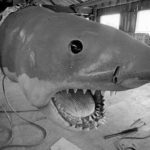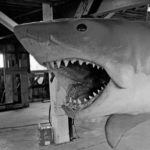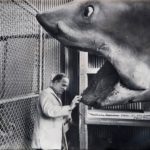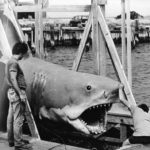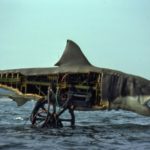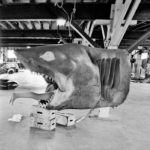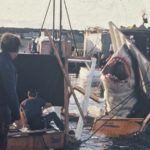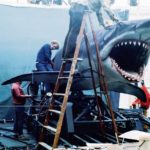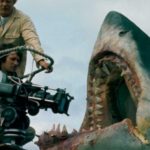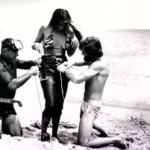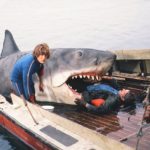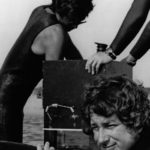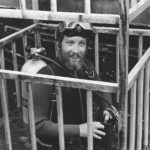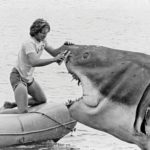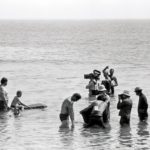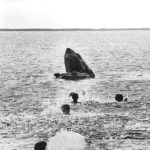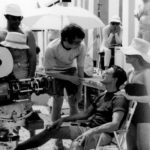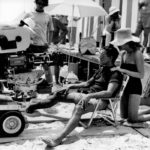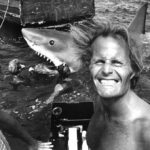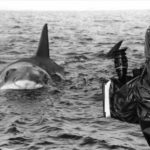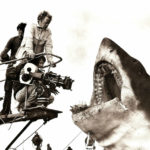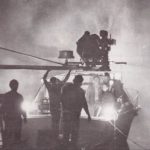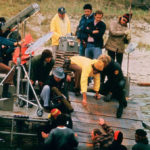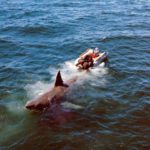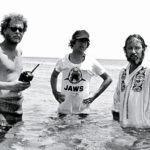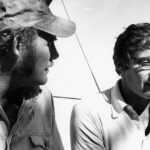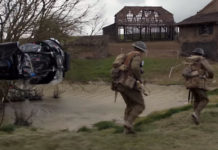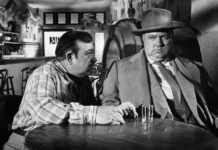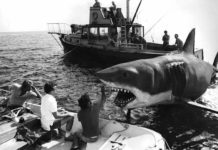Welcome to Film Goblin’s Behind the Scenes column. We hope to cover the most interesting and timeless movies with some pics and factoids you might already know, but if you don’t, even better! Feel free to recommend or contribute images or articles in the comments below.
“Here’s To Swimmin’ With Bow Legged Women”
Jaws is based off a novel of the same name by Peter Benchley. Many changes were made as the book made it’s a way to the screen.
In the book, Hooper was involved in an affair with Chief Brody’s wife. Although this was included in the film’s early screenplays, it was eventually cut out from the plot since producers believed it would detract from the central plot points.
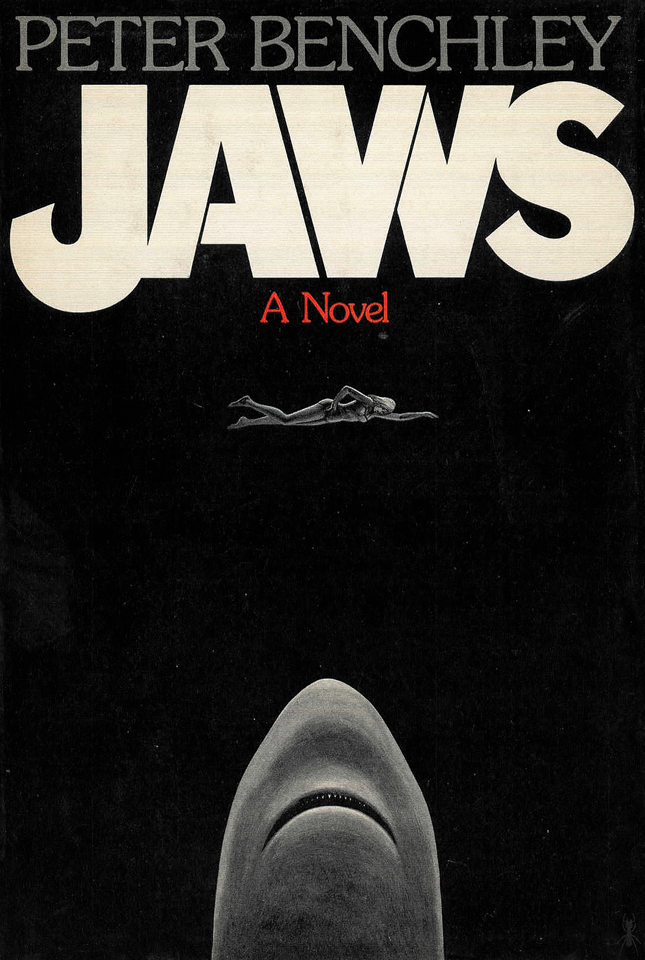
Mayor Vaughn’s insistence on the beach staying open wasn’t due to the pressure of local business owners, it was because he was being monitored by the Mafia and needed to maintain their real estate investments on Amity Island.
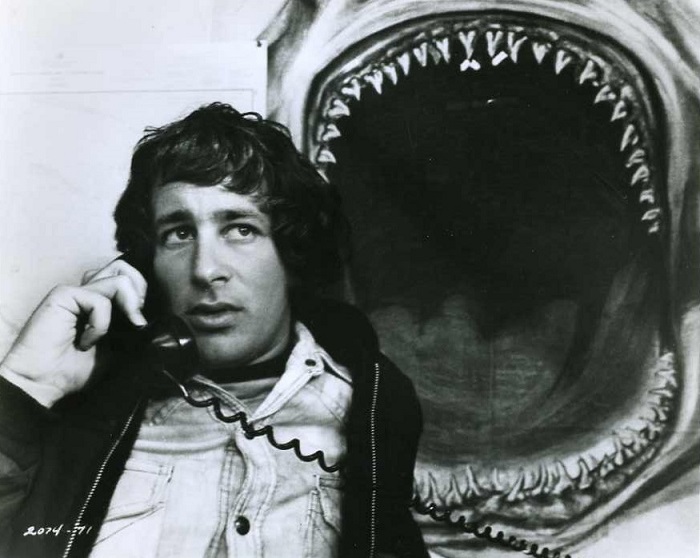
When Spielberg read the novel, he found the human characters to be so unlikeable that he was rooting for the shark.
Before the success of Jaws, Spielberg was feeling immense pressure to ensure the film was a success. His most recent movie, The Sugarland Express, had flopped and left critics seriously unimpressed.
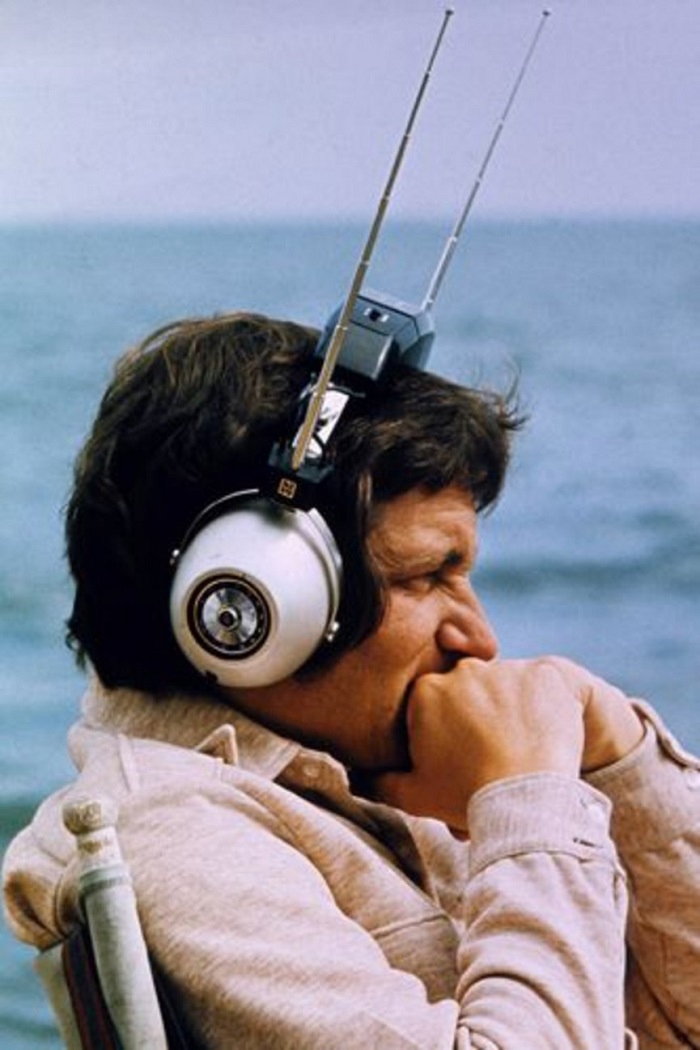
Jaws would turn out to be a nightmare to make. Between feuding actors, unpredictable weather conditions, and countless mechanical issues, the pressure seemed to be too much for the young director, who subsequently suffered a mental breakdown. He was desperately afraid that the film would end his career.
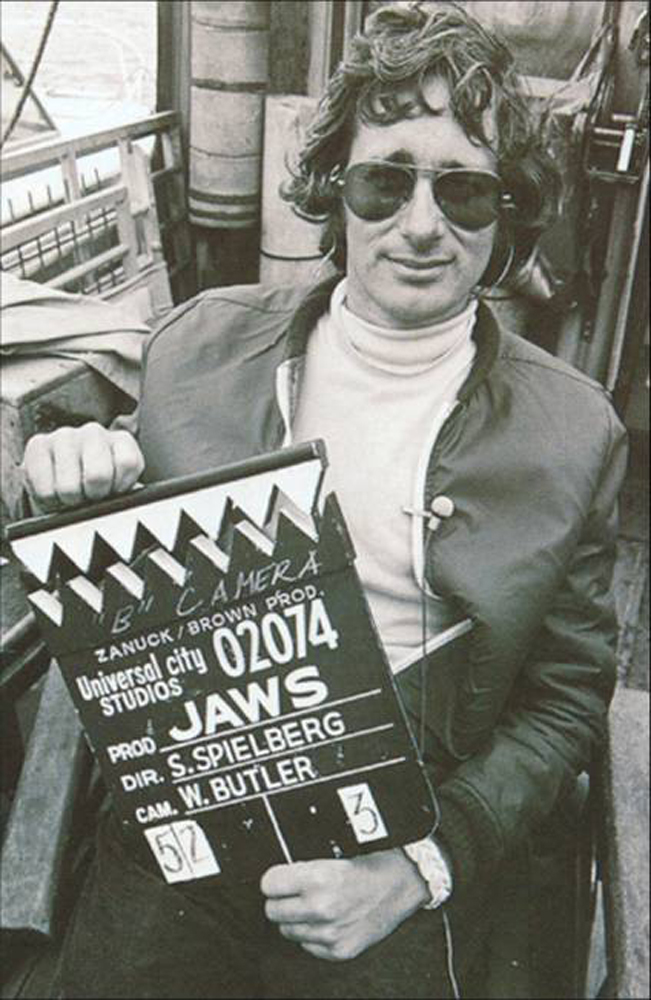
Charlton Heston was considered for the role of Amity’s Chief of Police, Martin Brody.
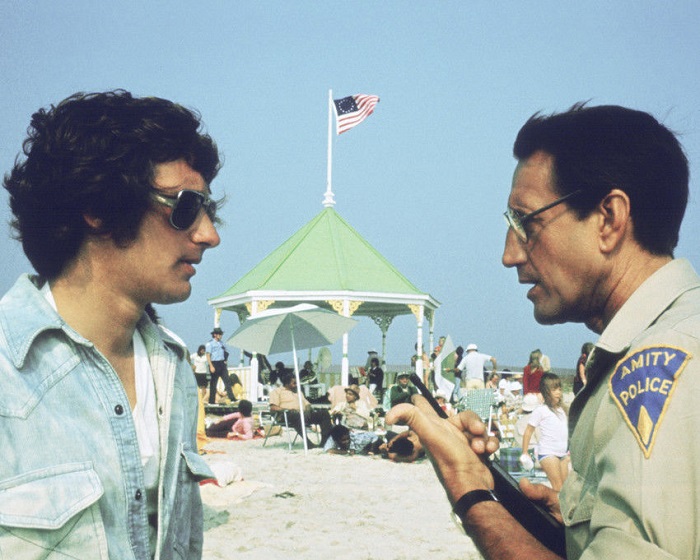
When Spielberg decided to go with another actor Heston was reportedly so furious that he refused to ever work with the director again.
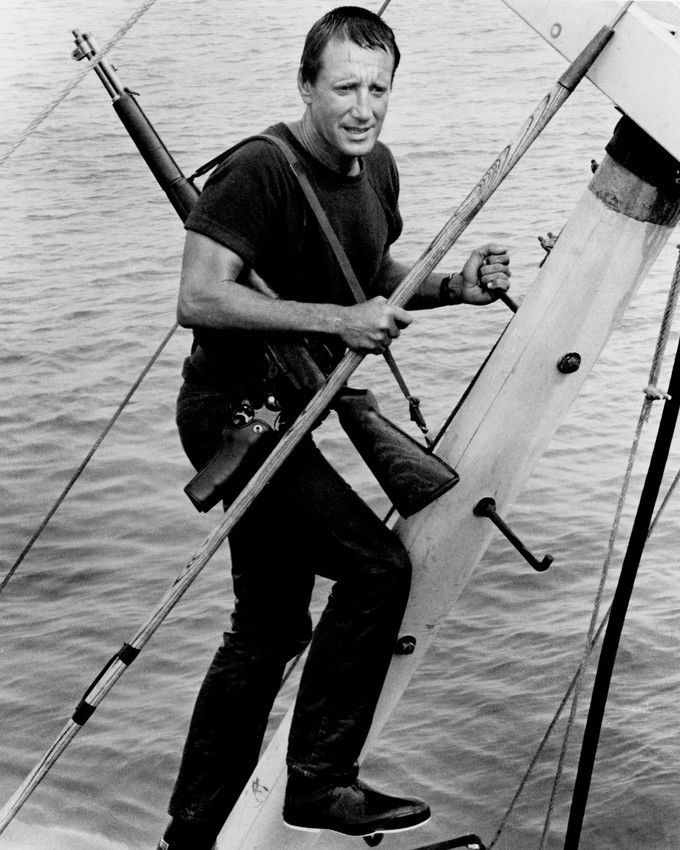
Roy Scheider got the role of Chief Brody after overhearing Spielberg mentioning the movie at a Hollywood party. He heard the director talk about the scene when the shark jumps out of the water and onto the boat, which left him desperate to appear in the film. Scheider then approached Spielberg who soon offered him the role.
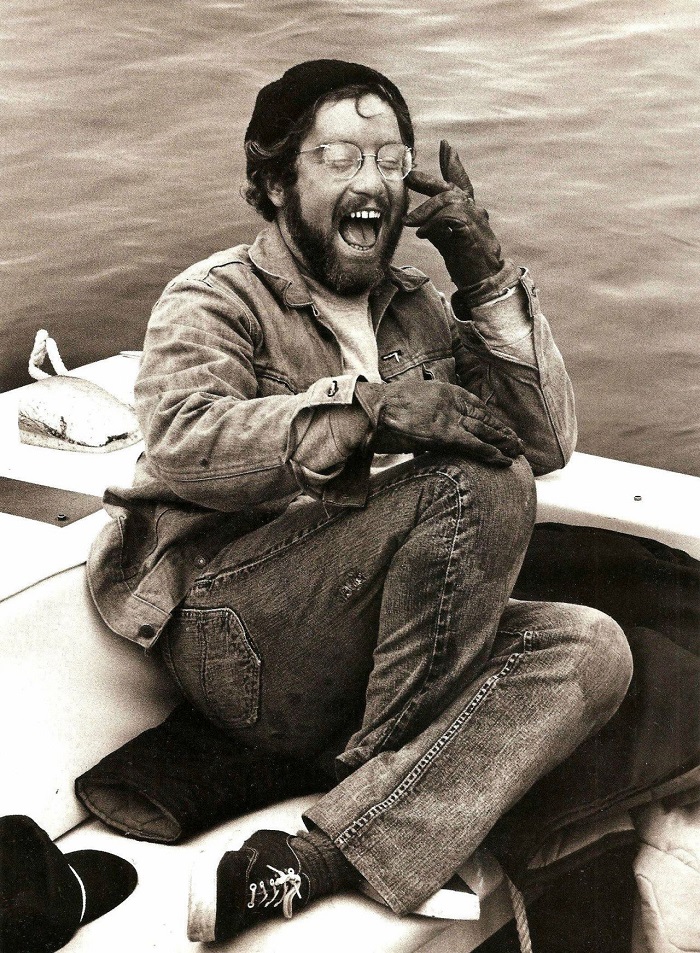
Jon Voight, Joel Grey, and Jeff Bridges were all considered for the role of oceanographer Matt Hooper, which eventually went to Richard Dreyfus.
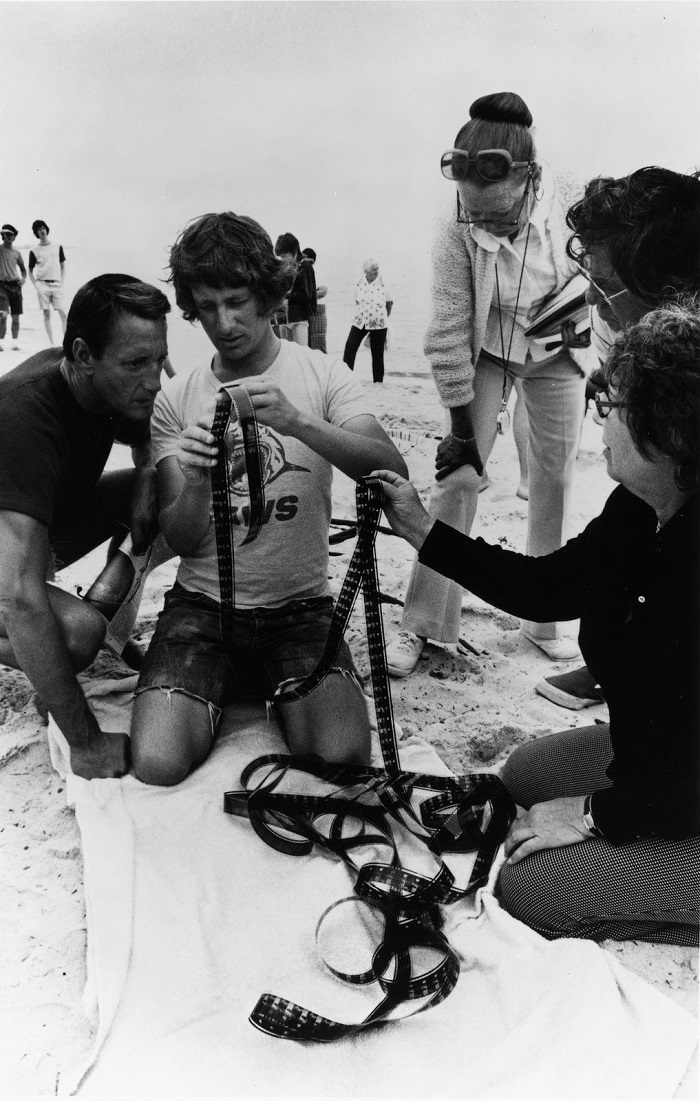
The original budget for Jaws was $3.5 million, but by the time shooting concluded, the production cost soared to $9 million. Investing the extra paid off, according to BoxOfficeMojo.com, the box office total for Jaws is currently at $260 million.
As is standard for a Spielberg movie, the director used storyboard artists during production.
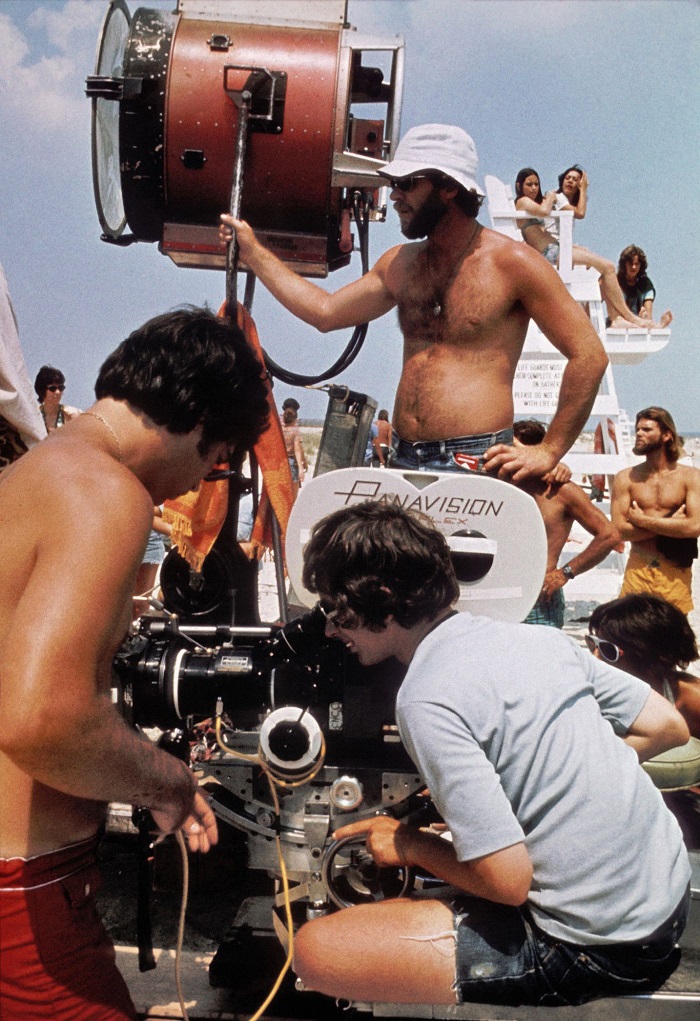
The scheduled 55 days to complete principal photography sky-rocketed to 159 days to finally complete.
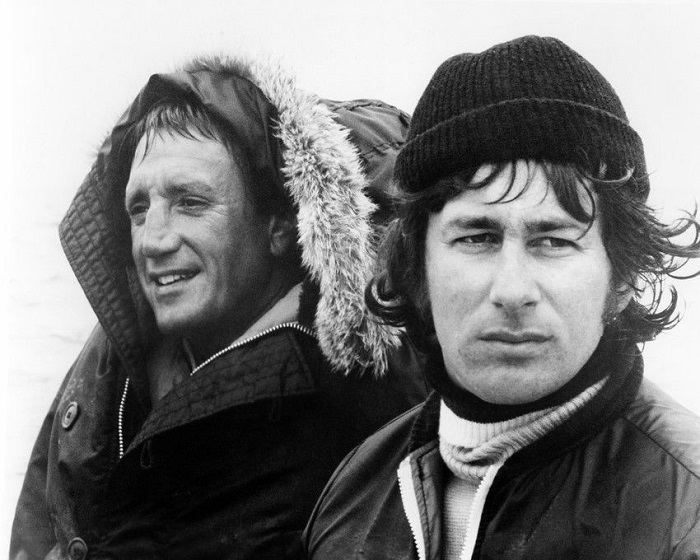
“You’re Gonna Need A Bigger Boat!”

The filmmakers originally wanted to train a real great white shark for the film, but when they realized this was impossible, Spielberg decided the only thing that would work, would be to build three full-size mechanical models, costing $250,000 each.
He named them “Bruce”, after his lawyer. But when things weren’t going well on set, he’d often refer to their other nickname, “The Great White Turd”.
Spielberg’s dissatisfaction furthered as he wasn’t convinced his models looked like real sharks, and with the models not functioning correctly, this all resulted in the shark not appearing on the screen until the 81-minute mark.
This actually helped build the suspense in the movie, contributing to its success. The shark occupies roughly five minutes of screen time.
A common misconception is that the model shark wasn’t tested in water before production. There’s a story of the shark being placed in the ocean and it immediately sinking, and a team of divers had to swim down and retrieve it from the ocean floor.
What really happened is that Bruce was tested before its sinking in Martha’s Vineyard, and had worked flawlessly during the test run. The test took place in unsalted water, however, and the salty ocean water is what messed with Bruce’s controls.
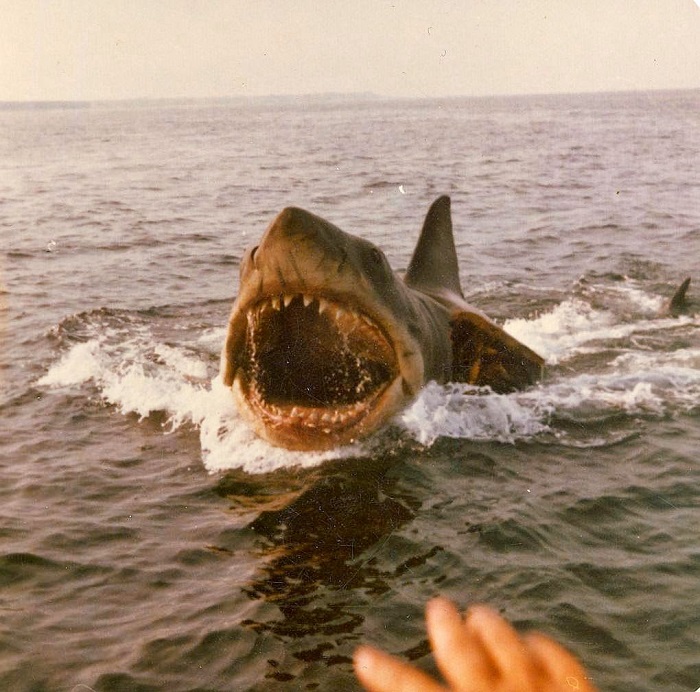
In order to make actress Susan Backlinie, the shark’s first victim, look like she was being pulled around underwater she had a harness with cables attached to her torso.
She was yanked back and forth by crew members running back and forth on the shoreline, to give the effect of the shark attacking her. Blackline got injured when they pulled the ropes too hard. Some of those screams are real!
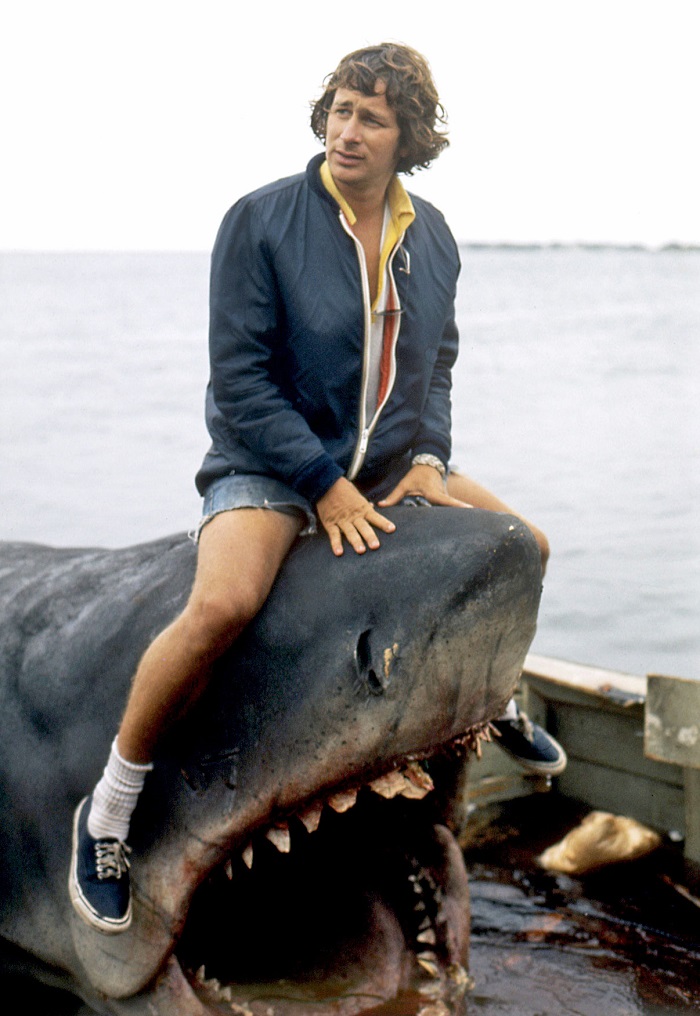
The shark weighed 1.2 tons and measured 25 feet in length. One reason that Martha’s Vineyard was the chosen location for the film’s production was due to the size of the shark.
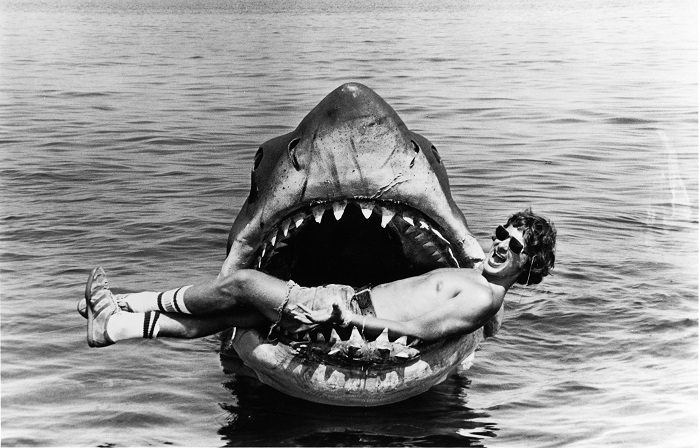
The ocean bed in the area has a depth of 35 feet for a stretch of 12 miles offshore.
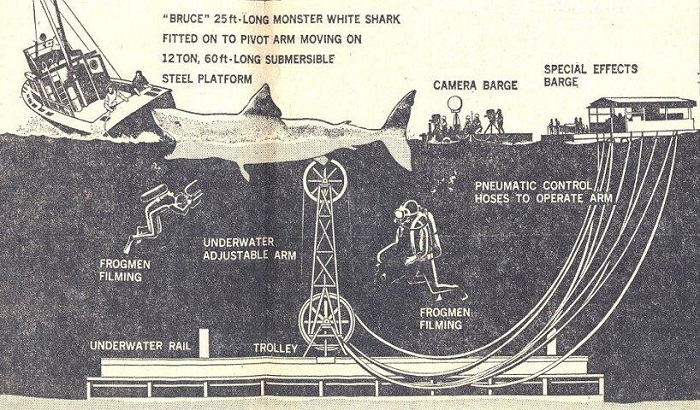
Those conditions made the location ideal for the shoot. When the shark wasn’t being used producers could rest the massive mechanical prop on the ocean floor.
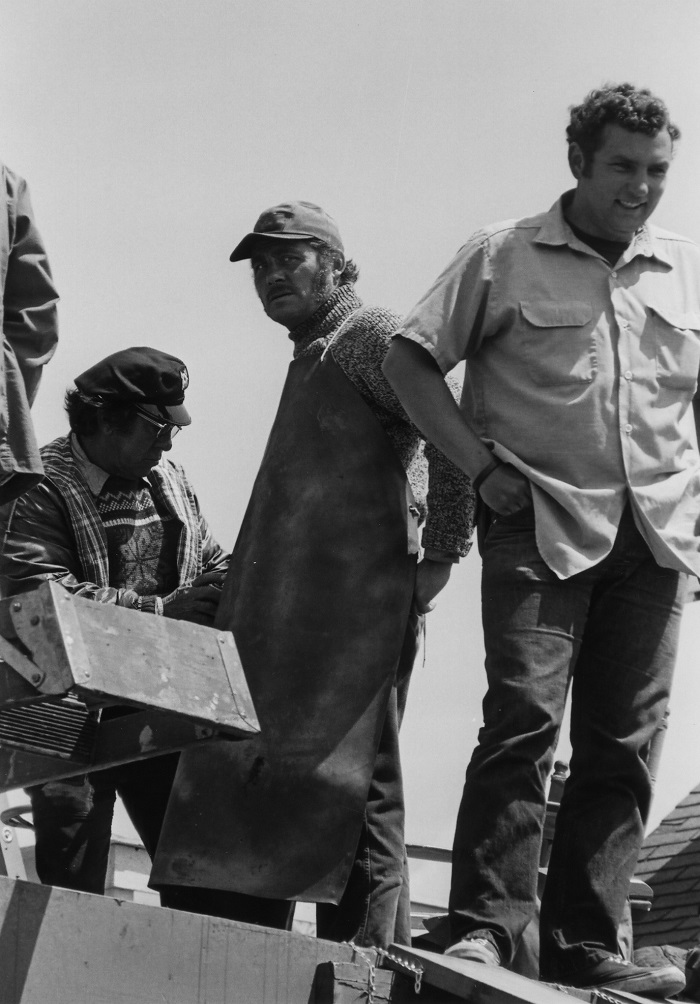
Robert Shaw struggled with drinking throughout the shoot. He drank during his pivotal speech about the USS Indianapolis and none of the footage was useable.
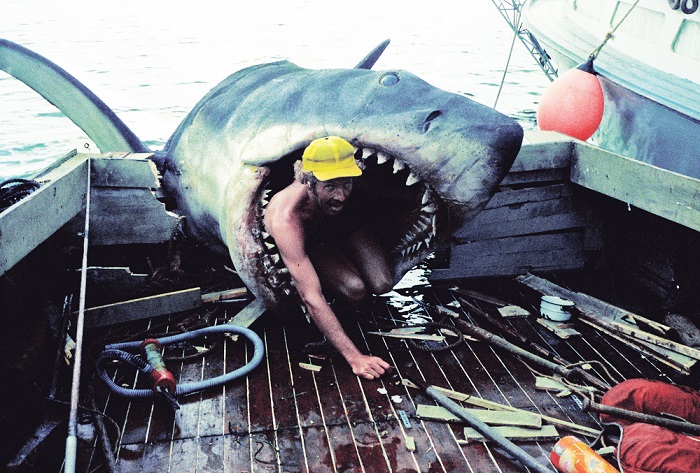
Annoyed with himself, Shaw phoned Spielberg and asked if he could have another try. The next day he nailed the speech in one take.
Spielberg originally wanted to introduce Quint in a cinema watching Moby Dick, laughing so much at the poor effects that the audience walked out. The brakes were put on this by Gregory Peck, the star of Moby Dick, as he owned the rights and was so disappointed with his performance that he didn’t want anyone to see it again.
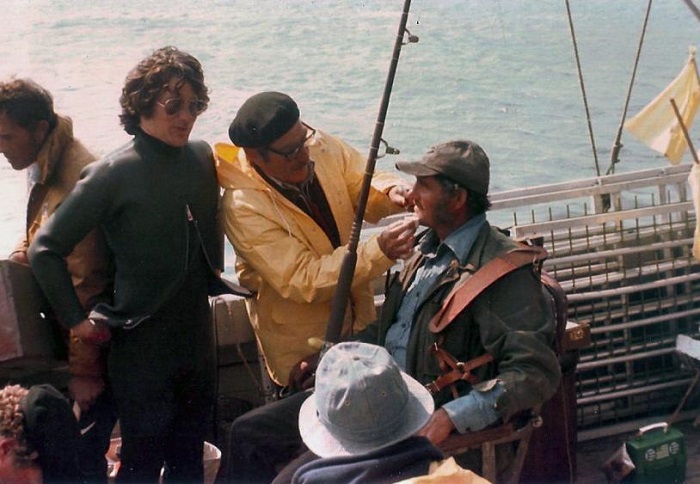
“Smile, You Son Of A Bitch!”
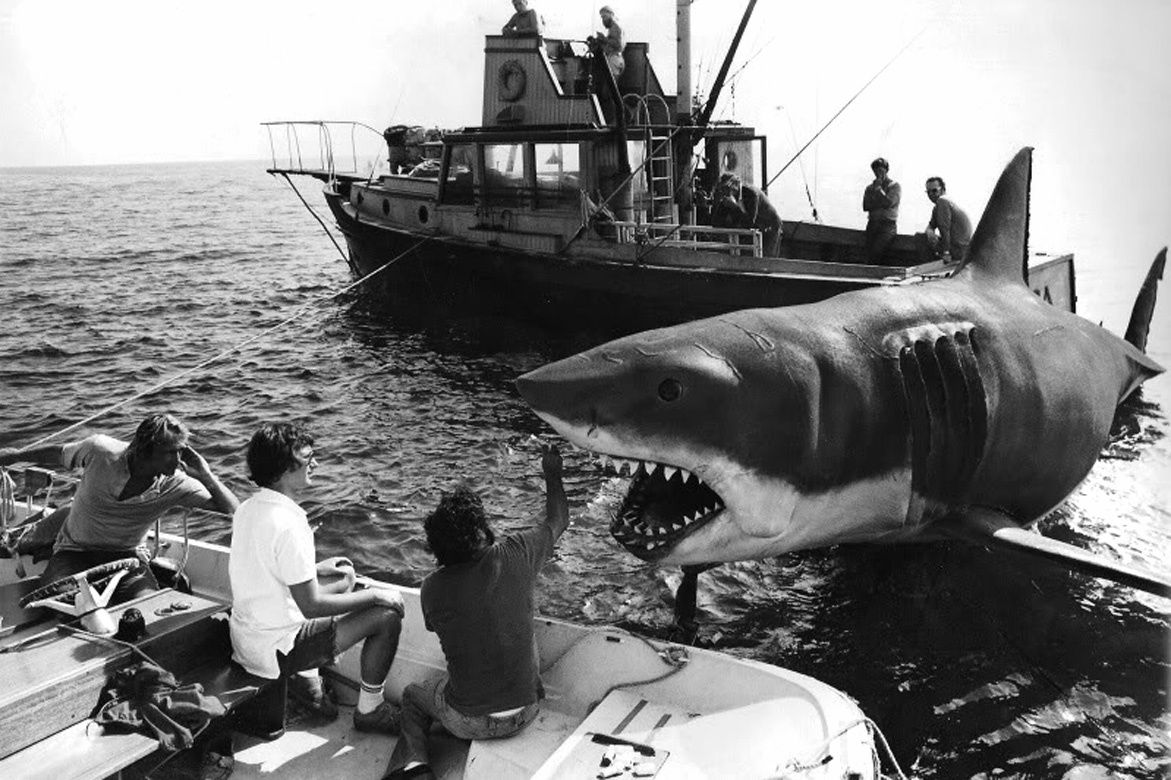
During shooting on a scene aboard the Orca, the boat sank. The camera was submerged in water, potentially destroying the film, but after rushing it to New York the footage was saved.
Hooper had his fate re-written by a shark. While filming footage of a real great white attacking a cage (containing a small actor for scale) the shark became entangled in a rope and smashed the cage to bits.
Spielberg liked the footage so much that he re-wrote the scene to have Hooper escape during the cage’s destruction.
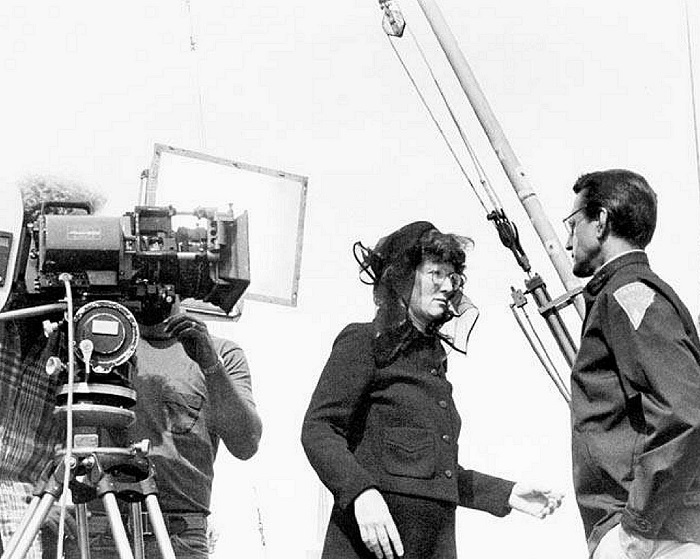
Lee Fierro, who plays the bereaved Mrs. Kintner, couldn’t fake the scene where she slaps Brody, so Roy Scheider was socked across the face repeatedly.
Originally, young Alex Kintner was supposed to be seen eaten by the shark. Instead, Spielberg chose to show brief glimpses of the shark, with lots of water splashes and finally a huge spurt of blood. Here’s the unused footage:
The iconic poster for Jaws wasn’t actually made for the film. It was initially designed by artist Roger Kastel for the paperback version of the novel the movie was based on. The image of the shark coming up to the surface of the ocean was actually modeled after a great white shark diorama at the American Museum of Natural History in New York City.
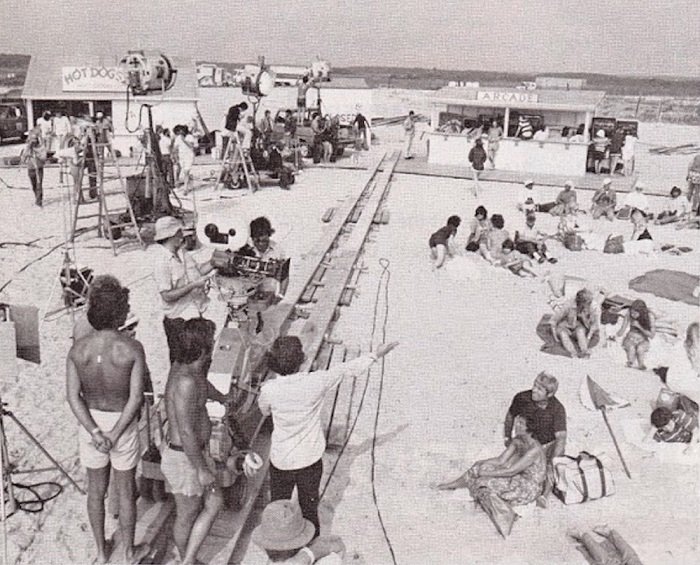
Brody’s dog in the film was played by Spielberg’s dog, Elmer.
Fidel Castro was a huge fan, he considered Jaws to be a Marxist masterpiece.
Composer of the film’s famous score, John Williams, first played the main Jaws theme for Spielberg on his piano using only two fingers, but Spielberg didn’t think Williams was being serious until Williams played it for him a few more times. The film’s signature score went on to win the Academy Award for Best Original Score.
Considered one of the greatest films ever made, Jaws was the prototypical summer blockbuster, regarded as a watershed moment in motion picture history, and it won several awards for its music and editing and was the highest-grossing film until the release of Star Wars in 1977.
Bruce was ranked the eighteenth greatest villain on the AFI’s list of 100 Heroes and Villains.

DISCLAIMER: We try our best to attribute images, videos, and quotes to their creators and original sources. If you see something on Film Goblin that’s incorrect, please contact us.




